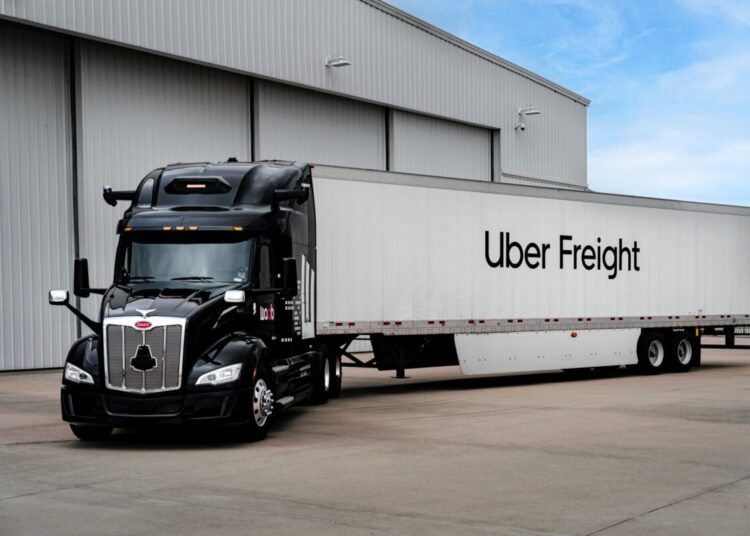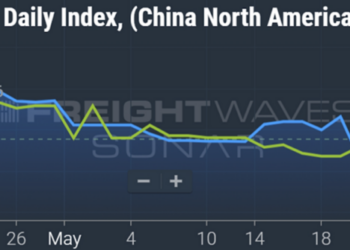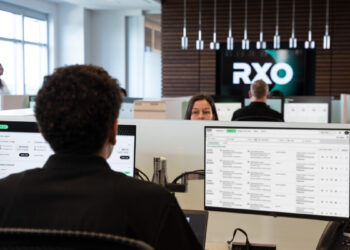Lior Ron is a fan of autonomous trucking. You might even say the head of Uber Freight loves the idea of driverless trucks.
But as the late Tina Turner asked, “What’s love go to do with it?”
The late Tina Turner asked the important question.
“We see across the board super strong demand for autonomy from shippers,” Ron told me in a recent interview. “We have a list of over a hundred shippers waiting to engage with those deployments. And we’re actually in a supply crunch of not having enough capacity from the autonomy providers to satisfy the demand.”
So, maybe it’s just business, not love.
Uber Freight works with Aurora Innovation and Volvo Autonomous Solutions. It recently signed a 10-year agreement with Waabi, a newer entry to the Level 4, high-autonomy space, to schedule loads on its digital freight network. Before Waymo Via put its autonomous trucking business into hibernation, Uber Freight had big plans with them, too.
Improving road safety and saving money on paying drivers — not necessarily in that order — motivate shippers to line up to take advantage of the coming transition to driverless trucking. Other than a handful of pilots, autonomy today is monitored by safety drivers, who have to be paid just as if they were still doing the driving.
Knocking off 40% of the cost
Removing the driver knocks off 40% of the operating cost. Sure, there are trade-offs — autonomous trucks are way more expensive than human-driven ones. It’s unclear who will take on those assets, but Ron thinks it will likely be carriers. They know about fleet maintenance and the right life spans for the trucks they own.
“They’re looking for opportunities to run a more cost-efficient operation,” Ron said. “And if they look at a five-to-10-year horizon, autonomy is definitely one of the strongest opportunities for them to streamline the operation.”
Uber Freight has some equipment in its Powerloop railer pools. Owning autonomous tractors is not in the cards.
“Never say never,” Ron said. “But that’s not our business model.”
Uber Freight may love the idea of autonomous trucks, but don’t look for the digital freight broker to own any. (Photo courtesy of Waabi/Debora Conn)
Figuring out the issues
Nothing is easy about autonomy, in part because so little is known. Leading players like Aurora Innovation and Kodiak Robotics are trying to figure out those issues now that the driverless autonomous technology targets small-scale commercialization as soon as late 2024.
“It’s going to take some time to adjust, to transition, to understand how to actually iterate on their supply chain to fit an autonomous network,” Ron said. “If it’s a transfer hub, OK, great. How do they do the first mile, the last mile? What do they need to have on both ends in terms of that?”
TuSimple built a fleet of more than 70 trucks equipped with its robot-driving system and completed more than 10 million miles moving freight. Then it realized how much money it was losing and sold off most of the Navistar trucks it had purchased.
“I think everyone understands there’s a role for owning assets and there’s a role for autonomy development. And I don’t think any of those companies have aspirations to build a ginormous fleet,” Ron said.
Texas as the target
Interstate 45 from Dallas to Houston is a generally flat, uninteresting freight-dense stretch of Texas highway. It’s the testing choice of many autonomy developers. Aurora has opened I-45 as its first commercial route. Kodiak likes it, too. But both companies know that neither shippers nor carriers will make a lot of money on the 240-mile run between the two.
“It’s a great practice ground,” Ron said. “If you really make the operation super smooth on both ends, you can gather some success. But there’s more opportunity on the longer lanes.”
Lior Ron, head of Uber Freight, has a list of more than 100 shippers waiting to get access to autonomous trucking. (Photo: Uber Freight)
That’s why Aurora is looking at Fort Worth to El Paso, Texas — 600 miles — for its next undertaking. Kodiak envisions Houston to Atlanta — 790 miles — as its second undertaking.
“We’re working hand in hand with the autonomy providers to educate them on lane topology, and where to make money and how to make money. What will be cost-efficient lanes, and therefore work with shippers to allow everyone to be educated.”
Ron compares it to intermodal where trains move freight on long routes before tractors take over. Transfer hubs make economic sense when they are 300 or 400 miles apart. The additional cost of first- and last-mile positioning of trailers for middle-mile autonomy eats into the savings of removing the driver from the cab.
Kodiak Robotics and Berkshire Hathaway? Why not?
Berkshire Hathaway has an enormous pile of cash — $157 billion — on its balance sheet.
Warren Buffett’s company owns 80% of the Pilot Co. with designs on buying the rest of the travel center network that operates in 44 states.
Pilot Co. led the $125 million B Series funding round for autonomous trucking developer Kodiak Robotics two years ago.
Pilot and Kodiak are working together on autonomous trucking hubs, starting in Atlanta.
Berkshire Hathaway has about a 10% stake in Chinese electric truck maker BYD. (It sold off some of its stake in May because Buffett didn’t want to compete with Tesla.)
Kodiak Robotics cobbled together an autonomous system in a Peterbilt electric truck to show at the Advanced Clean Transportation Expo in May.
BYD makes Class 8 electric trucks.
Kodiak wants and needs a manufacturing partner. Former TuSimple partner Navistar could be available So could BYD.
This is nothing Kodiak would comment on, but if Buffett is looking to further embrace autonomous trucking, he need only examine his portfolio.
Kodiak Robotics cobbled together an electric version of its autonomous truck for show-and-tell at the Advanced Clean Transportation Expo in May. (Photo: Kodiak Robotics)
Some love to new players in the FreightTech 25
Several new players cracked the FreightWaves FreightTech 25 announced Thursday at the F3: Future of Freight Festival.
Three companies in the autonomous space made the list: Plus at No. 2, Einride tied at No. 15 with J.B. Hunt Transport Services, and Gatik at No. 18, down one position from No. 17 in the 2023 list.
On the electrification side, first-time entrant ChargePoint made its first appearance at No. 10.
Chattanooga, Tennessee-based accounting and auditing firm HHM administered the vote. A simple points system, based on voters’ rankings, determined the FreightTech 25. A company scored 25 points for each first-place vote, with descending points through to the 25th place, which received one point. Companies were ranked by total points.
“This was the most disrupted list I’ve ever seen,” FreightWaves CEO Craig Fuller said. “If you think about the venture cycle from 2015 to 2022 in freight for that first stage, we’re largely past that. What’s interesting about this list is how different it is than past years. A lot of new names — and a lot of names that have been on the list for many years — did not make the list this year.”
Briefly noted …
TuSimple had $776.8 million of cash, equivalents, and investments as of Sept. 30, largely a result of layoffs and winding down a lot of its U.S. operations.
Hydrogen truck startup Quantron AG plans to work together with Ford’s operations in Turkey about making a hydrogen-powered fuel cell version of the heavy-duty F-Max.
Electric infrastructure startup TeraWatt Infrastructure will charge Pepsi trucks at a new facility in Rancho Dominguez, California.
An Arizona federal court dismissed a suit by British electric truck maker Tevva against Canada’s ElectraMeccanica because of jurisdictional issues.The fight over a failed tie up likely will continue.
Peterbilt is taking out the trash in Portland, Oregon, delivering a Model 520EV refuse vehicle to City of Roses Disposal & Recycling. Yes, rival Daimler Truck is headquartered in Portland.
RRAI, which focuses Class 8 autonomous efforts off the highway and for the military, is partnering with FPInnovations on forestry roads in northern Canada.
A Mack Granite fitted with RRAI autonomous software is working on the forestry roads in northern Canada. (Photo: RRAI)
That’s it for this week. Click here to get Truck Tech via email on Fridays. And catch the latest in major events and hear from the top players on Truck Tech at 3 p.m. Wednesdays on the FreightWaves YouTube channel.
Thanks for reading. I’m always interested in your feedback and story ideas. Email me at aadler@freightwaves.com.
The post Autonomous trucking: ‘What’s love got to do with it?’ appeared first on FreightWaves.














